Running successful Google Ads campaigns means one thing: ROIReturn on Investment, a measure of the profitability of an investment..
Amongst the myriad tools and strategies that exist, there is one game-changing tool for any advertiser looking to optimize ad spend and achieve measurable results: Target CPA.
But what is Target CPA, and how does it fit into your digital marketing strategy?
This article dives deep into the concept, starting with a clear definition and the benefits it brings to your campaigns.
What is Target CPA in Google Ads?
Target CPA, or Cost Per Acquisition, is a bidding strategy in Google Ads designed to help advertisers achieve a specific cost per conversionA specific action that a user takes, such as making a purchase or signing up for a service..
Essentially, it allows you to set a target cost that you’re willing to pay for each successful action, such as a lead, a purchase, or a signup, while Google’s algorithmA set of rules or processes followed by a computer to perform tasks or solve problems. works to optimize your campaign to meet this goal.

Illustration of cost optimization and machine learning in Target CPA.
Definition of Target CPA
Target CPA is a form of automated bidding in Google Ads that uses historical conversion data and machine learningA subset of artificial intelligence where systems learn and improve from data without explicit programming. to set bids for your ads.
These bids aim to maximize conversions while keeping the average cost per acquisition close to your specified target.

Visualizing the integration of ROI strategies with Target CPA in digital marketing.
How Target CPA Fits into ROI Strategies
One of the primary goals of any digital marketing campaign is to achieve a high ROI.
Target CPA ensures that your advertising spend is efficiently used by focusing on acquiring conversions at a predictable cost.
This predictabilityThe ability to estimate or foresee future outcomes based on patterns or trends. is especially valuable for businesses that need to budget carefully or assess campaign performance with specific financial metrics in mind.

Illustrating the key benefits of using Target CPA for efficient and automated ad campaigns.
Key Benefits of Using Target CPA
- Cost Efficiency: It ensures your ad spend goes toward meaningful conversions without overspending.
- Automation: Time and effort are saved by using Google’s machine learning and reducing the need for manual bid adjustments.
- Consistency: It sustains a predictable cost per acquisition, making financial planning and campaign scalability easier.
- Focus on Results: Target CPA places all the emphasis on performance-driven outcomes, aligning your campaigns with your business goals.

Highlighting the strategic timing for implementing Target CPA in campaigns.
When to Use Target CPA in Your Campaigns
Target CPA is best suited for campaigns that already have a significant amount of conversion data.
Google recommends at least 15 conversions in the past 30 days to allow the algorithm to optimize effectively.
It’s ideal for businesses looking to scale their campaigns while maintaining a predictable ROI.
As you begin to experiment with Target CPA in your campaigns, remember that this bid strategy can truly revolutionize your reach on Google Ads.
By understanding its mechanics and using it correctly, you can drive more conversions while staying within budget.
Target CPA is a powerful tool that helps advertisers optimize for specific cost per acquisition goals using Google’s advanced algorithms.
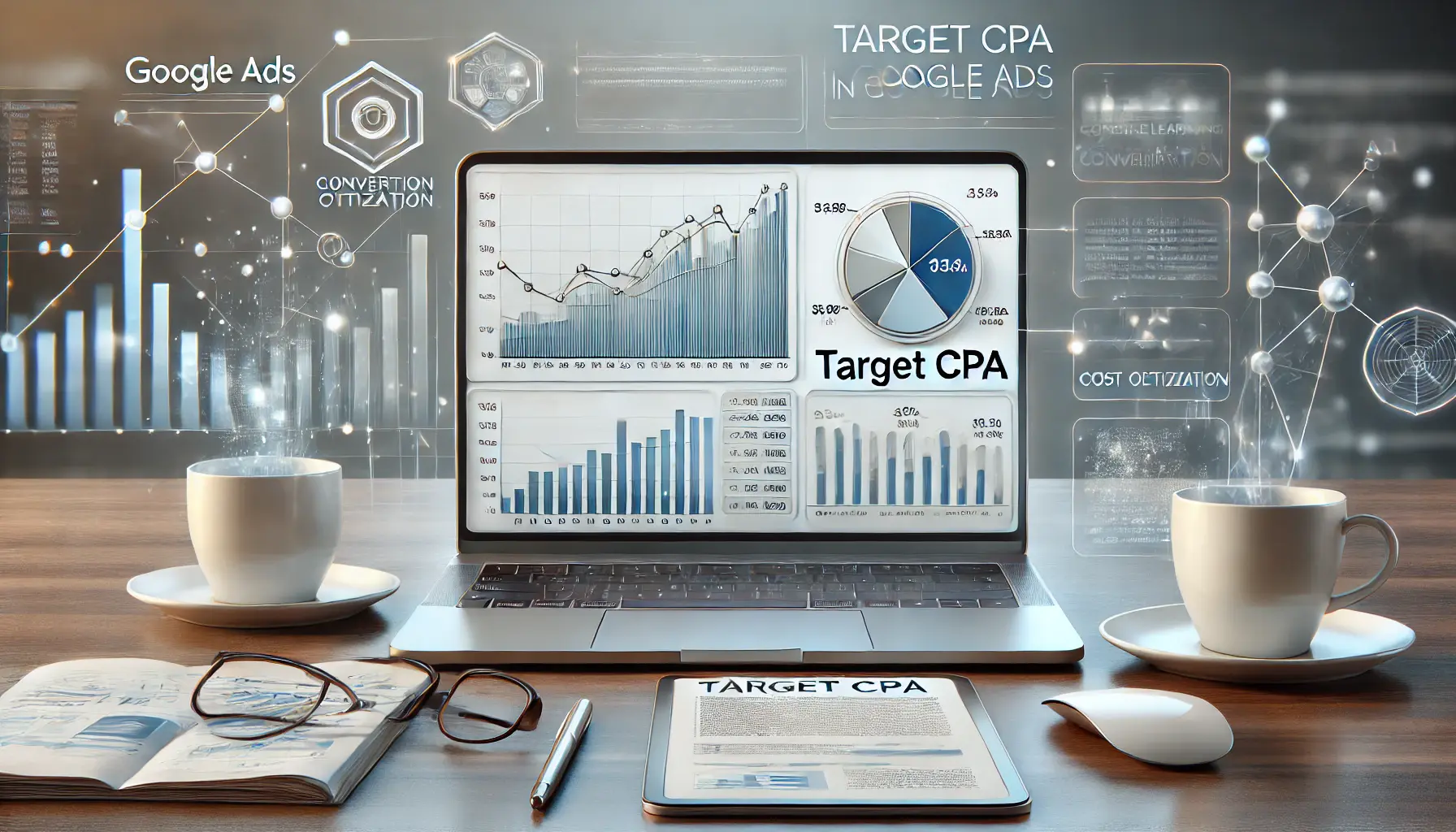
Illustrating the mechanics of Target CPA in Google Ads through data analysis and automation.
How Target CPA Works in Google Ads
Understanding how Target CPA works in Google Ads is crucial to optimizing your campaigns for the best performance.
It is a bidding strategy that uses historical dataData collected from past events or activities used to inform future decisions. and real-timeThe immediate processing of data or execution of tasks as events happen. signals to automatically adjust bids to achieve your desired cost per acquisition.
When your ad is eligible to serve, Google Ads considers a set of contextual signals, such as device type, location, time of day, and user behavior.
These signals help determine the best bid for a particular auctionA process where advertisers bid for ad placements, with the highest bid often winning..
By analyzing this data, Google Ads predicts the likelihood of a conversion and adjusts your bid accordingly to ensure your average cost per acquisition remains at or below your target.
It’s important to note that while Google Ads works to hit your target CPA, actual costs per conversion may vary.
Factors outside Google’s control, such as changes to your website, ad creatives, or increased competition in ad auctions, can impact performance.
This makes it essential to regularly monitor and adjust your campaigns to maintain their best performance.
By understanding how Target CPA works, you can better align your bidding strategy with your marketing objectives, ensuring the efficient use of your advertising budget and driving consistent results.
Google Ads utilizes real-time signals and historical data to adjust bids automatically, aiming to keep your cost per acquisition at or below your target.
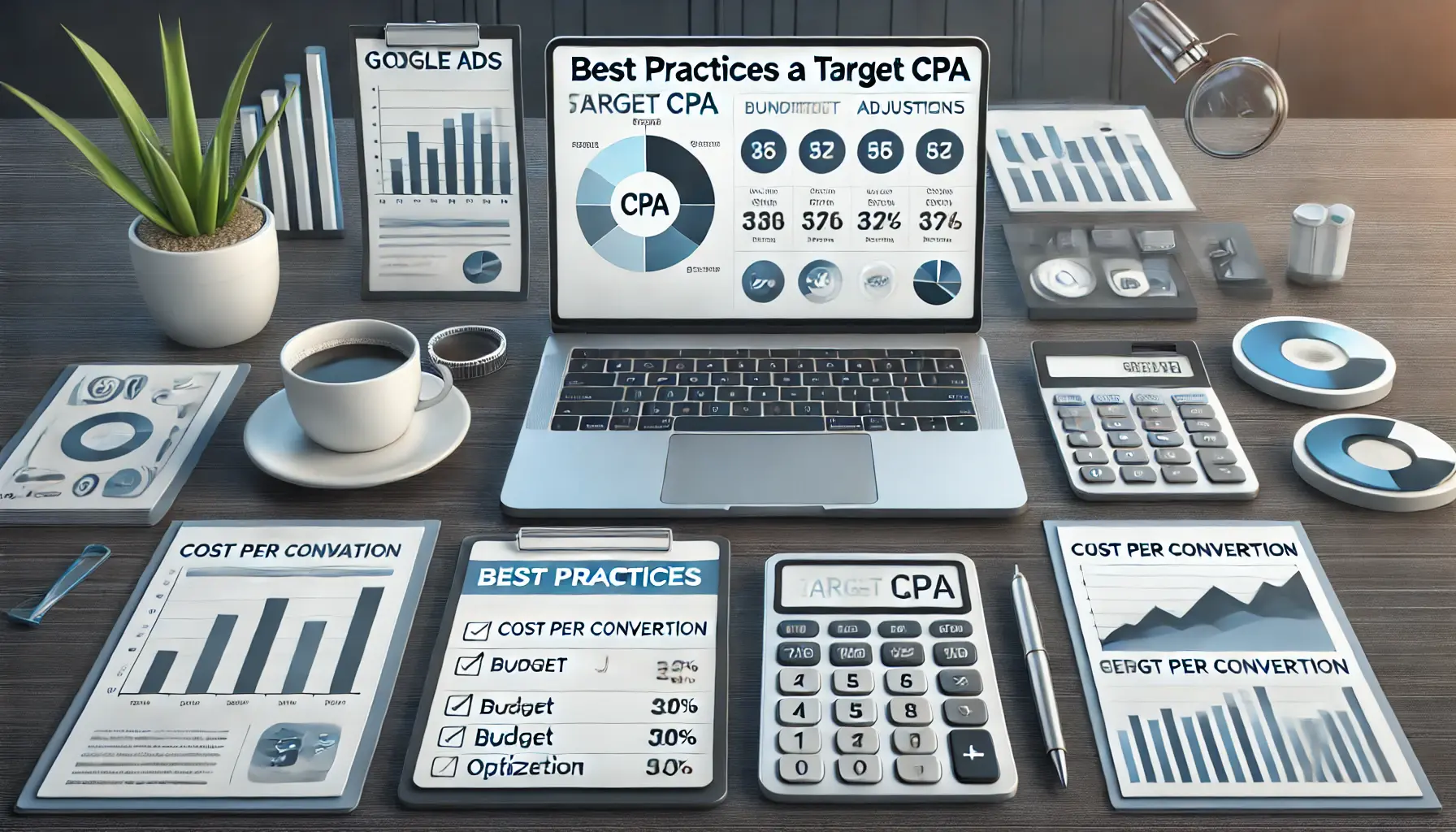
Illustrating the best practices for setting a Target CPA in digital marketing.
Best Practices for Setting a Target CPA
Implementing a Target CPA bidding strategy in Google Ads can significantly enhance your campaign’s efficiency.
However, to maximize its benefits, it’s essential to follow certain best practices.

Analyzing historical conversion data to optimize campaign performance.
Analyze Your Historical Conversion Data
Before setting a Target CPA, review your campaign’s historical performance.
Assess metrics such as past conversion rates and costs to establish a realistic and achievable target CPA.
This analysis provides a solid foundation for your bidding strategy.
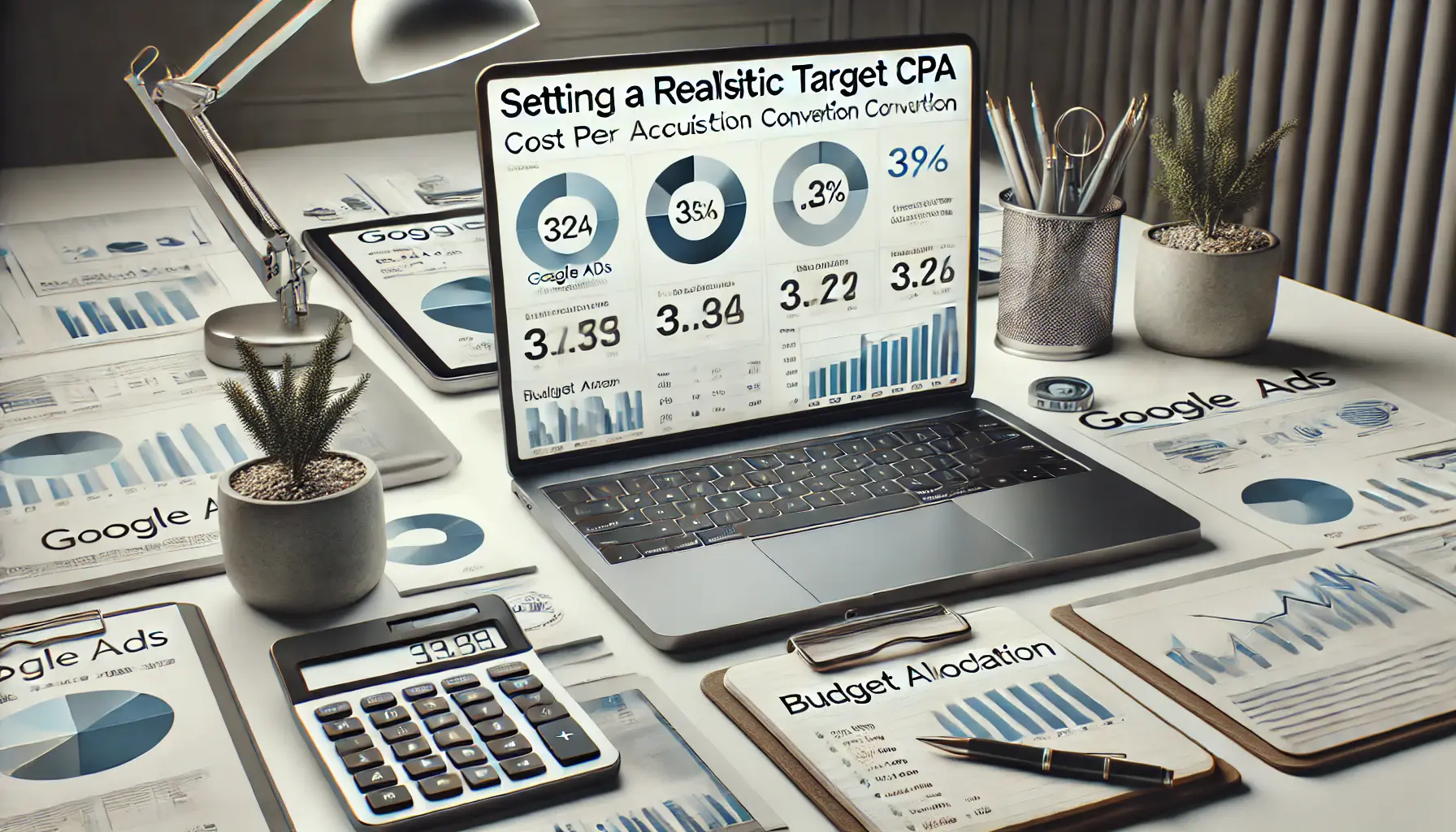
Focusing on setting realistic goals for Target CPA in digital marketing.
Set a Realistic Target CPA
It’s crucial to set a Target CPA that aligns with your business goals and reflects your historical data.
Setting an overly ambitious target may limit your ad exposure, while a too lenient target could lead to overspending.
Strive for a balance that maintains profitability while achieving your desired conversion volume.

Depicting the learning phase in Target CPA optimization, emphasizing the need for time and observation.
Allow Time for the Learning Phase
When you apply a Target CPA strategy, Google Ads enter a learning phase where it will automatically adjust bids.
During this period, performance may be uneven.
Give it sufficient time for the algorithm to optimize before making major changes.
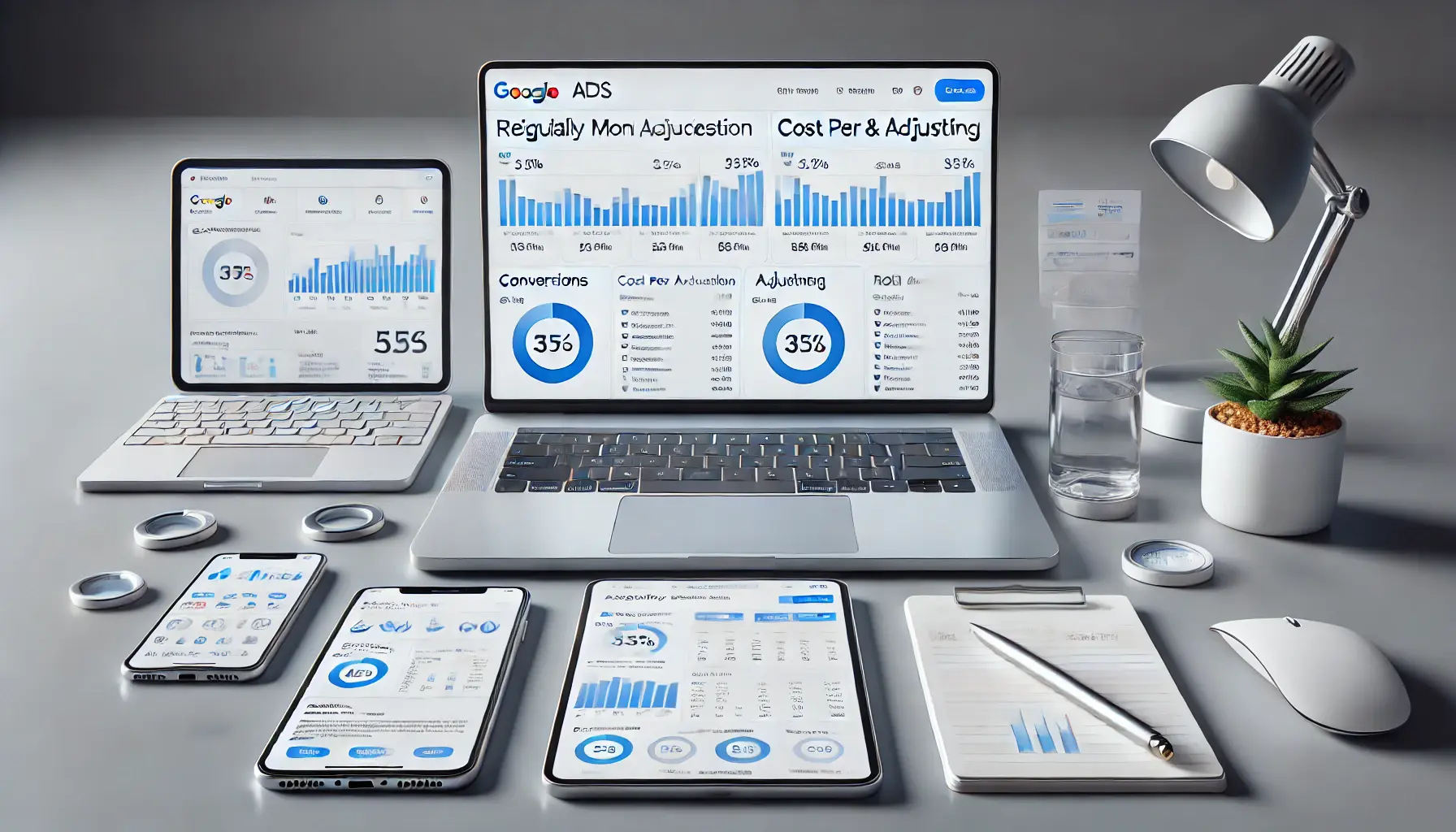
Illustrating the process of monitoring and adjusting campaigns regularly for optimal performance.
Monitor and Adjust Regularly
Regular monitoring of your campaigns is important.
Watch key metrics such as conversion volume, cost per conversion, and overall ROI.
Based on this data, make informed adjustments to your Target CPA to continually align with your business objectives.
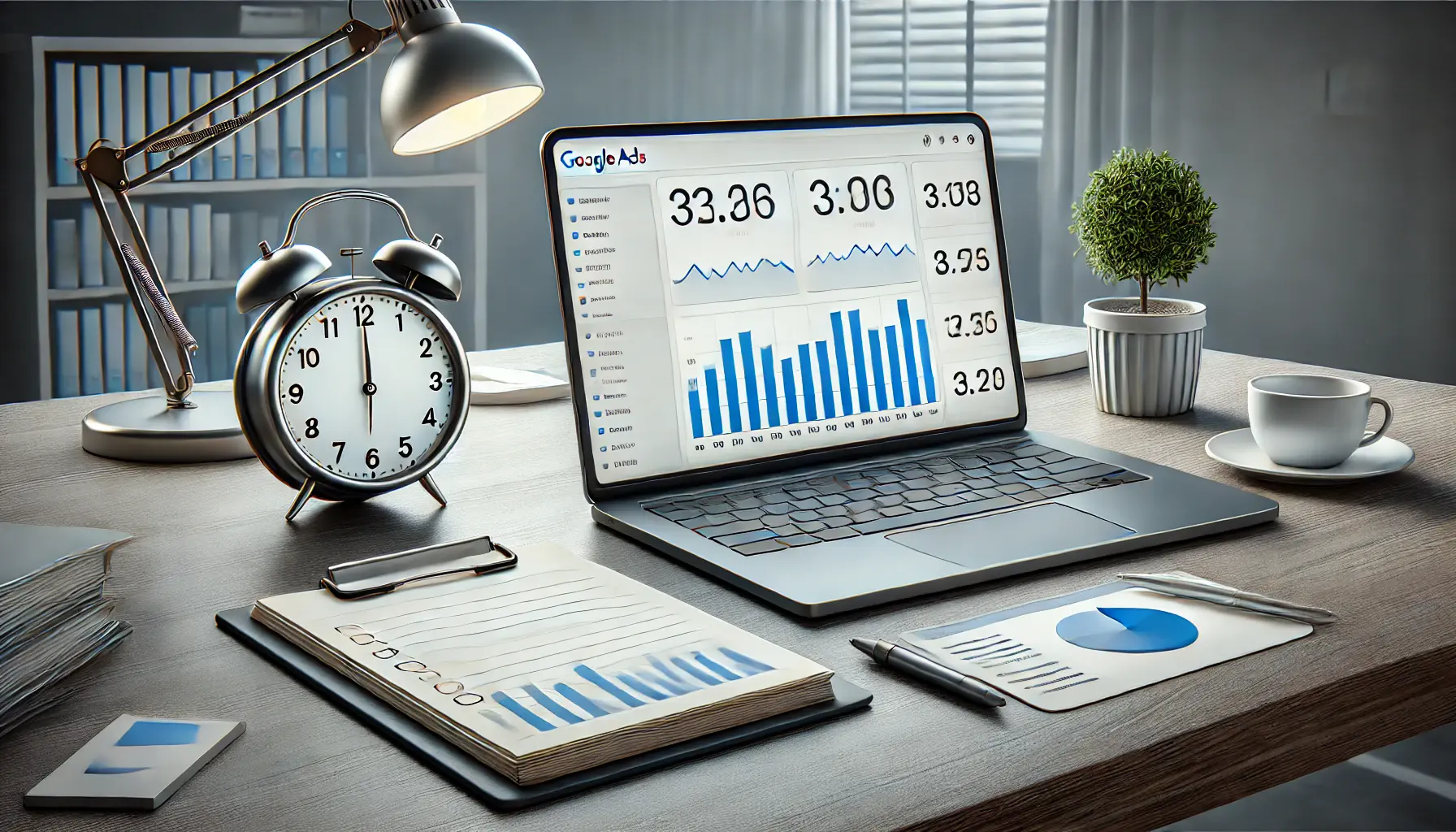
Emphasizing the importance of avoiding frequent or drastic changes in campaign management.
Avoid Frequent or Drastic Changes
Changes regarding Target CPA may be necessary, but make them rarely and only when absolutely required.
The system needs stability to learn and optimize effectively.
Gradual adjustments allow for more precise optimization.
By paying due attention to these best practices, your Target CPA bidding strategy can enhance your Google Ads campaigns, driving more conversions while keeping ad spend under control.
- Analyze historical data before setting a Target CPA.
- Allow the algorithm enough time for optimization.
- Monitor campaign performance regularly and make gradual adjustments.

Illustrating the challenges and limitations faced while using Target CPA in Google Ads.
Challenges and Limitations of Target CPA
While Target CPA bidding in Google Ads offers numerous advantages, it’s essential to be aware of its potential challenges and limitations to ensure optimal campaign performance.

Illustrating the concept of data dependence in optimizing Target CPA campaigns.
Data Dependence
Target CPA relies heavily on historical conversion data to make informed bidding decisions.
If your campaign lacks sufficient conversion history—ideally at least 30 conversions in the past 30 days—the algorithm may struggle to optimize effectively.
This can result in suboptimal performance and higher costs per acquisition.
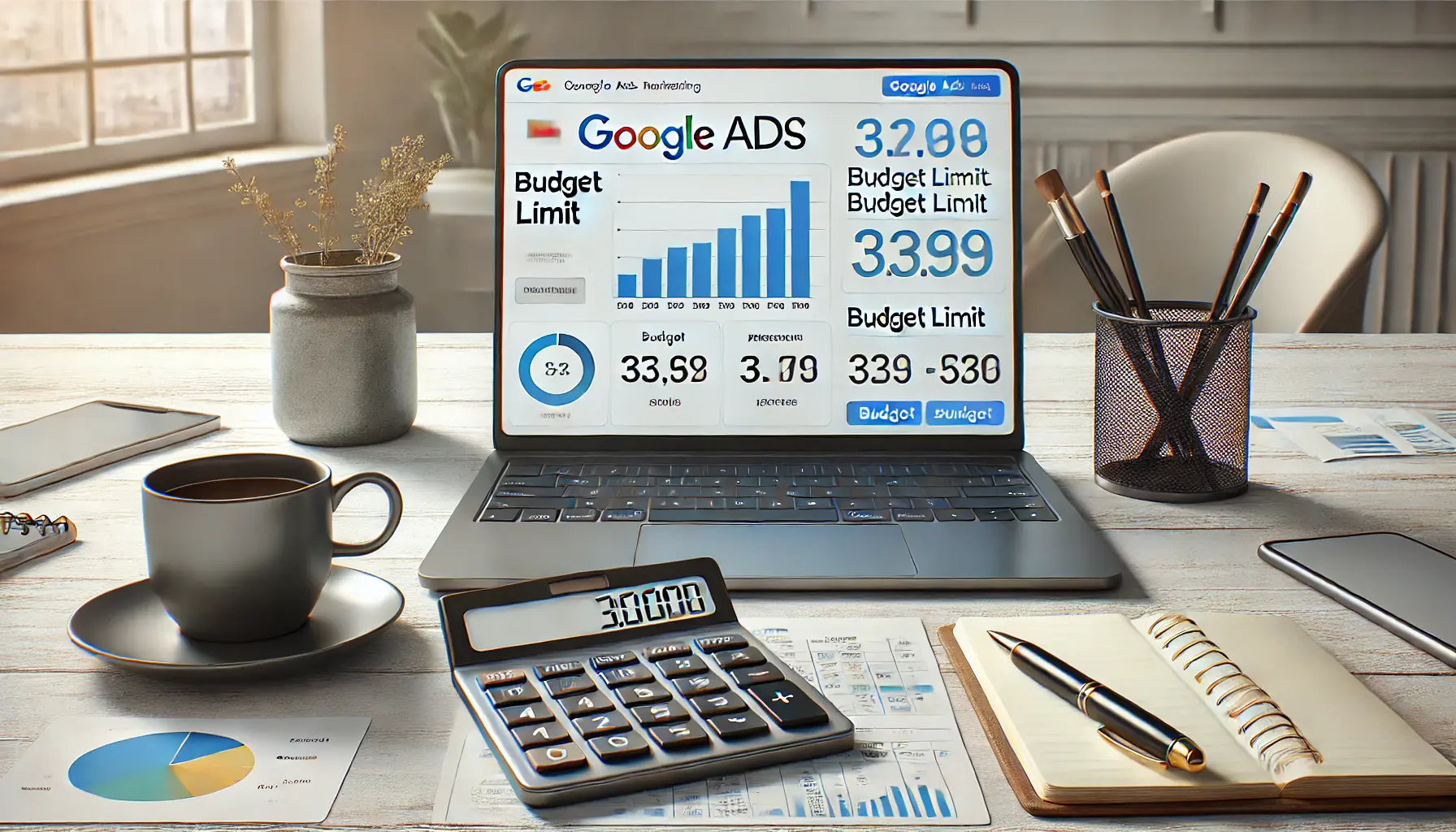
Illustrating the management of budget constraints in Google Ads campaigns.
Budget Constraints
A Target CPA strategy may cause your daily spending to vary.
For instance, Google Ads may temporarily raise your daily budget to capture more conversions, which could be challenging if your budget is not flexible.
It is important to ensure that your budget can accommodate such variations to avoid overspending.
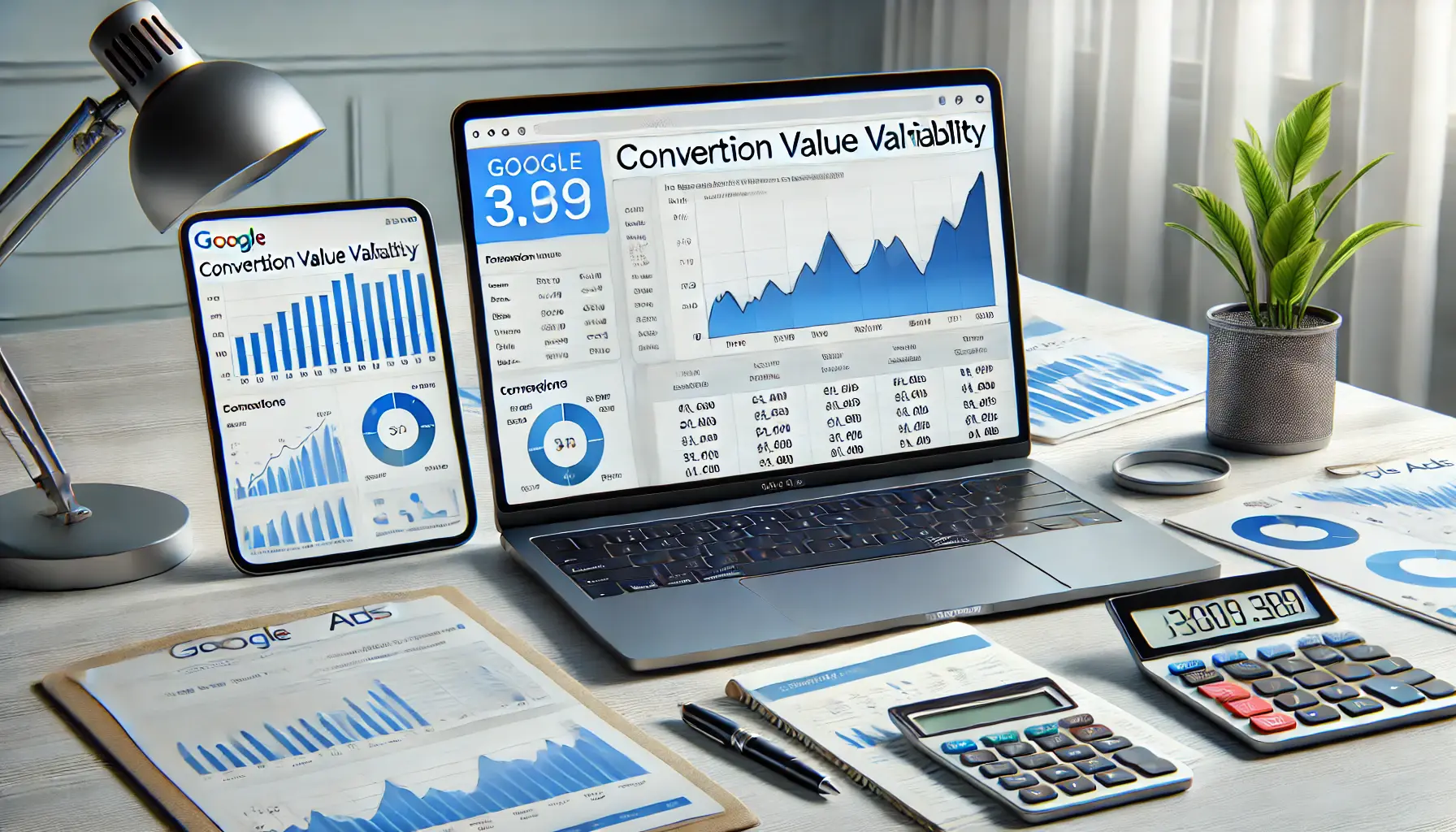
Illustrating the concept of conversion value variability in Google Ads campaigns.
Conversion Value Variability
Target CPA only considers the cost per acquisition and does not take into account the value of a conversion.
This means that all conversions are weighted equally, regardless of the actual revenue each one brings in.
For businesses selling products or services of different values, this can lead to an imbalanced return on investment.
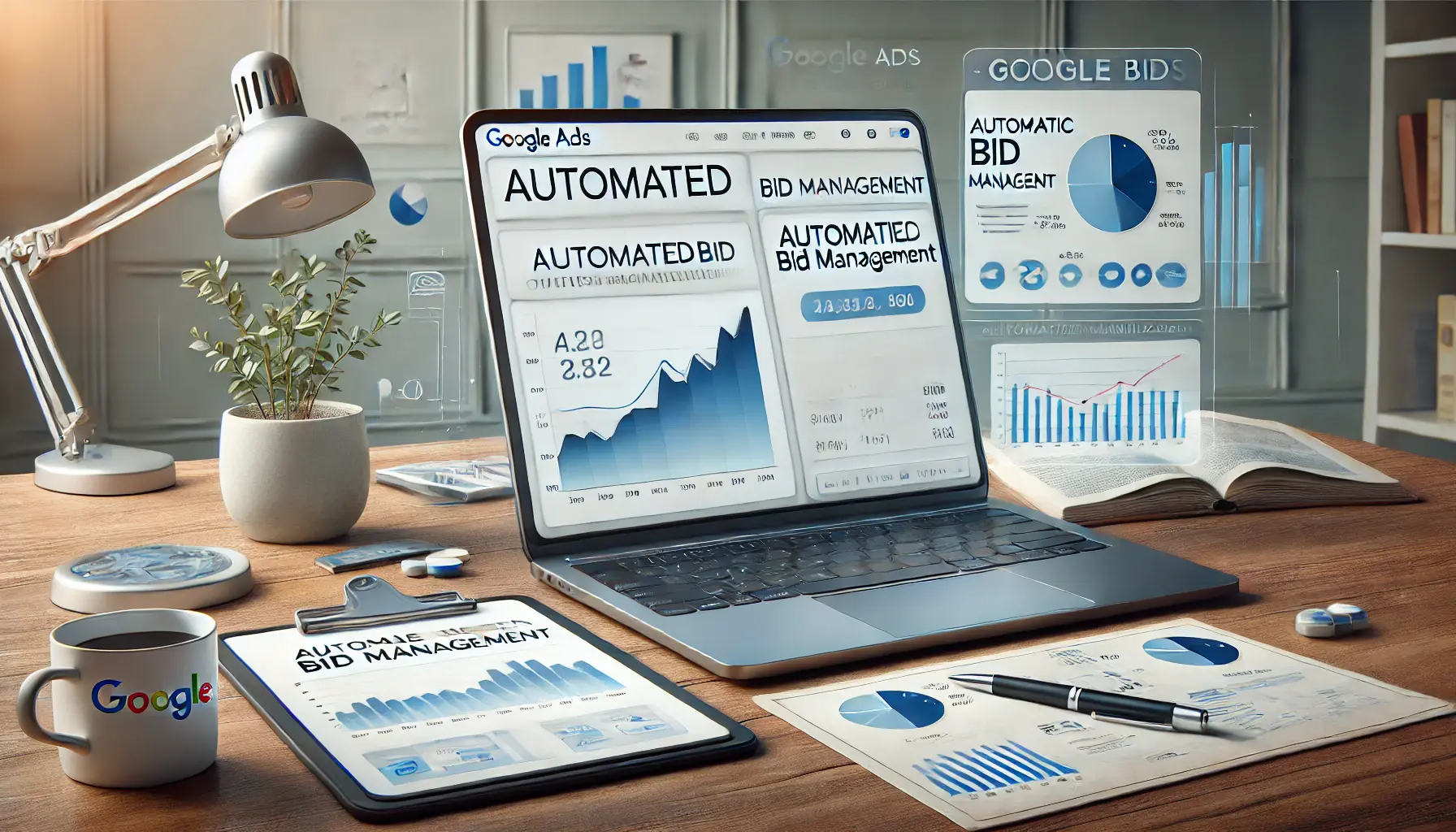
Illustrating the concept of limited control over bids in Google Ads campaigns.
Limited Control Over Bids
By adopting Target CPA, advertisers give up granular control over individual keyword bids to Google’s automated system.
While this can make things more efficient, it might not always align perfectly with specific campaign strategies or preferences, which could result in less precise bid management.
Understanding these challenges allows advertisers to proactively address them and ensure that the Target CPA bidding strategy aligns effectively with their overall marketing objectives and resources.
- Requires sufficient conversion data for optimization.
- Budget flexibility is necessary for daily fluctuations.
- Does not consider conversion value variability.

Illustrating the process of measuring success with Target CPA in Google Ads campaigns.
Measuring Success with Target CPA
Implementing a Target CPA bidding strategy in Google Ads is a strategic move, but assessing its effectiveness requires careful analysis of key performance indicators (KPIs).
By focusing on the right metrics, you can determine whether your campaigns are meeting your advertising objectives.

Illustrating the process of monitoring key performance indicators (KPIs) in Google Ads campaigns.
Key Performance Indicators to Monitor
- Conversion Rate: Check the percentage of clicks that yield a conversion. An increased conversion rate indicates that your ad is successfully reaching and persuading your targeted audience.
- Actual CPA: Compare your actual cost per acquisition against your target CPA. Consistently hitting or going below your target suggests that the bidding strategy is working effectively.
- Return on Ad Spend (ROAS): Assess the revenue generated relative to the amount spent on ads. A higher ROAS reflects a more profitable campaign.
- Conversion Volume: Track the total number of conversions over time. Growth in conversion volume demonstrates the scalability and reach of your campaigns.
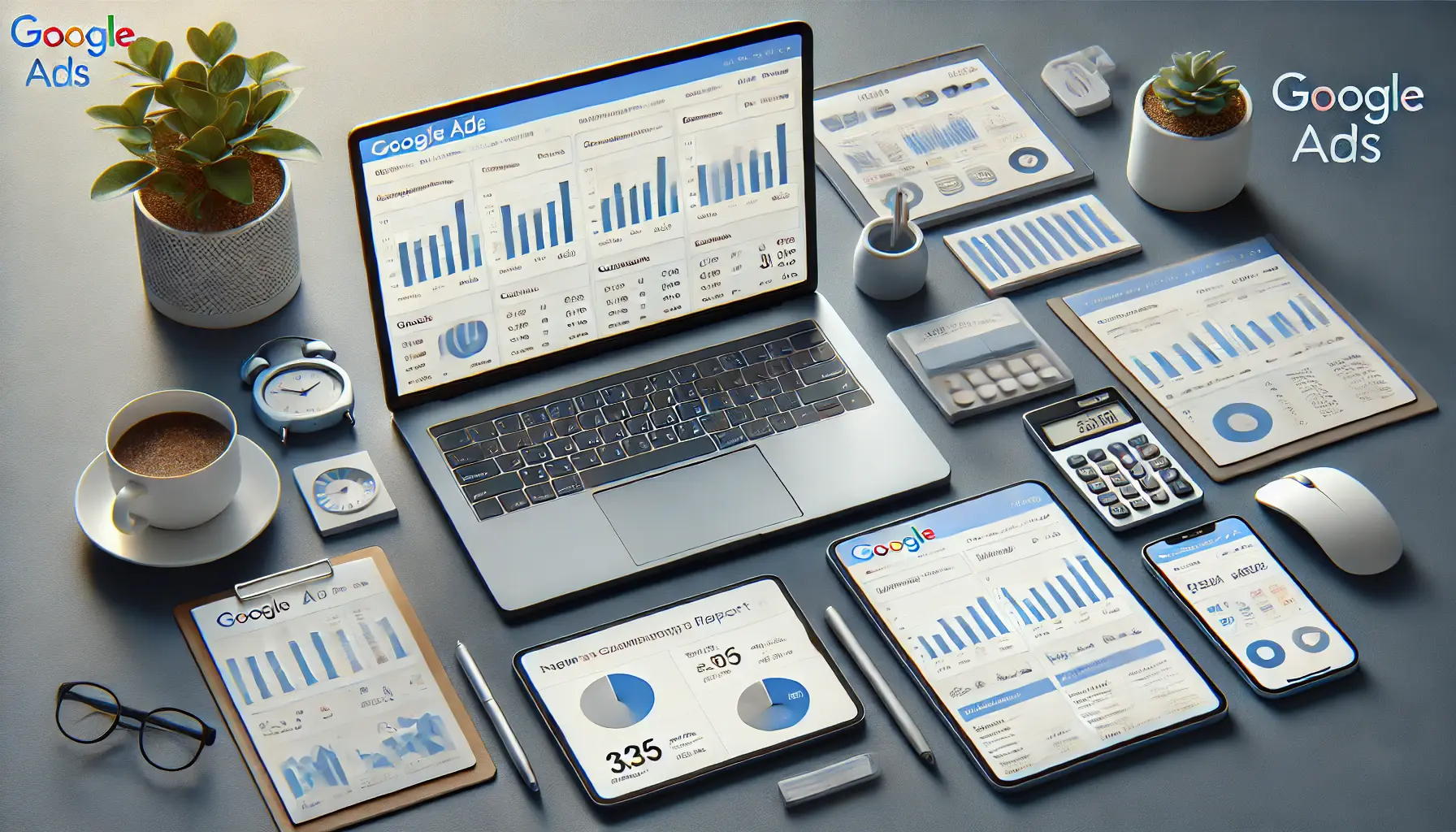
Illustrating the use of Google Ads reporting tools for campaign analysis and optimization.
Utilizing Google Ads Reporting Tools
Google Ads provides robust reporting capabilities to help you analyze these KPIs:
- Performance Reports: Create customized reports to view metrics like conversions, cost, and CPA, effectively gauging your campaign’s performance.
- Segmentation of Data: Segment your data by dimensions such as device, location, or time to gain better insights and identify areas for improvement.
- Conversion Tracking: Ensure conversion tracking is set up correctly for reliable data analysis.
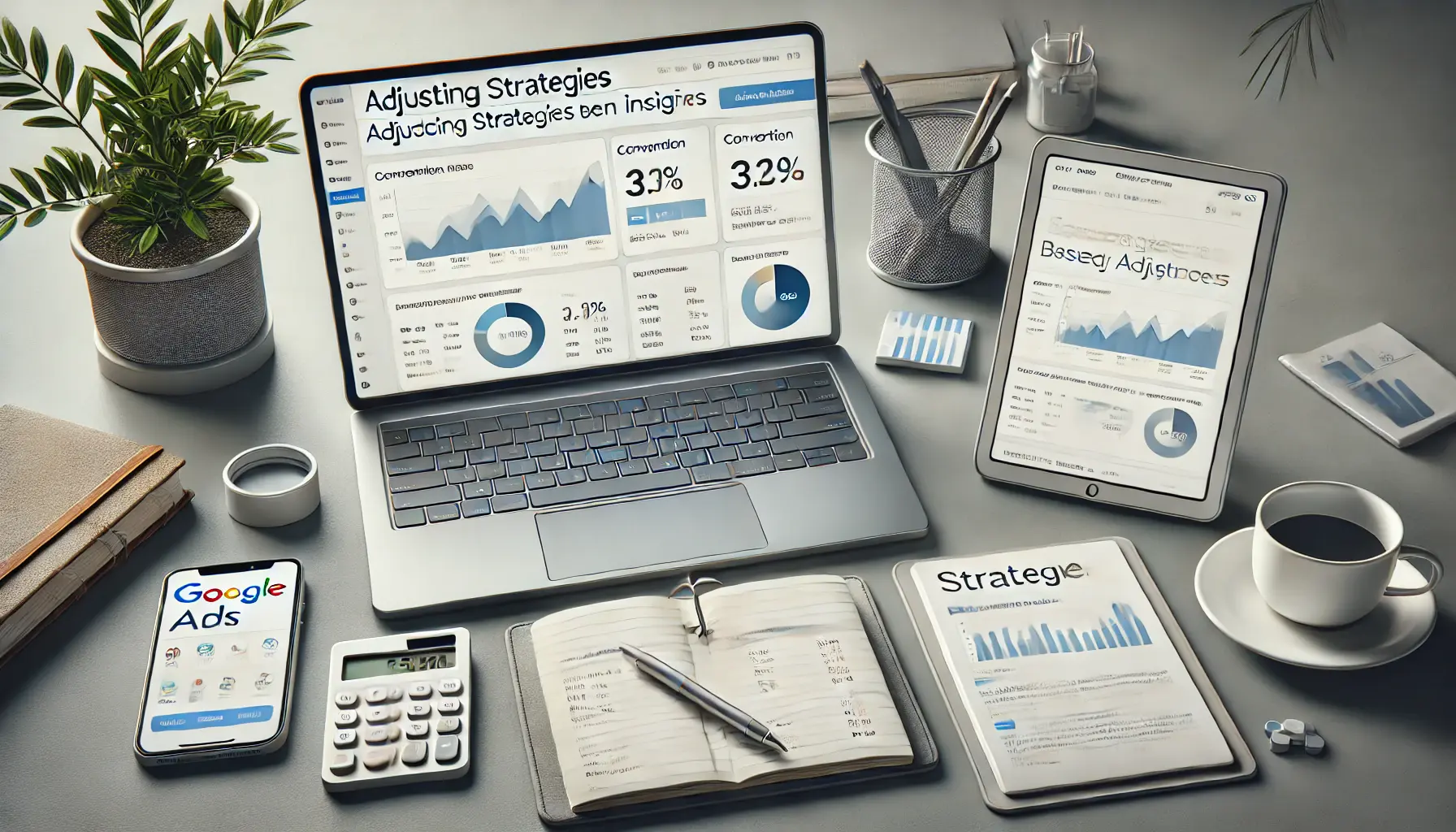
Illustrating the process of adjusting strategies based on insights to optimize Google Ads campaigns.
Adjusting Strategies Based on Insights
Revisiting these metrics regularly allows you to make informed decisions to further improve your campaign performance:
- Refine Target CPA: If your actual CPAs consistently come in under target, lower the target to drive more cost-efficient conversions.
- Optimize Ad Creatives: Analyze which ads deliver the highest conversion rates and iterate on successful elements.
- Allocate Budget Efficiently: Invest more in campaigns or ad groups showing superior performance to maximize returns.
By continually monitoring your campaigns and acting on these insights, you can optimize your Target CPA strategy for better results and an improved return on your advertising investment.
- Track conversion rate, actual CPA, ROAS, and conversion volume.
- Leverage Google Ads reporting tools to analyze key metrics effectively.

Illustrating the process of maximizing campaign performance with Target CPA optimization.
Maximizing Campaign Performance with Target CPA
Throughout this article, we explored the intricacies of using Target CPA in Google Ads, highlighting its benefits, best practices, and challenges.
To conclude, it’s essential to summarize the key takeaways and underline how this bidding strategy can drive successful advertising campaigns.
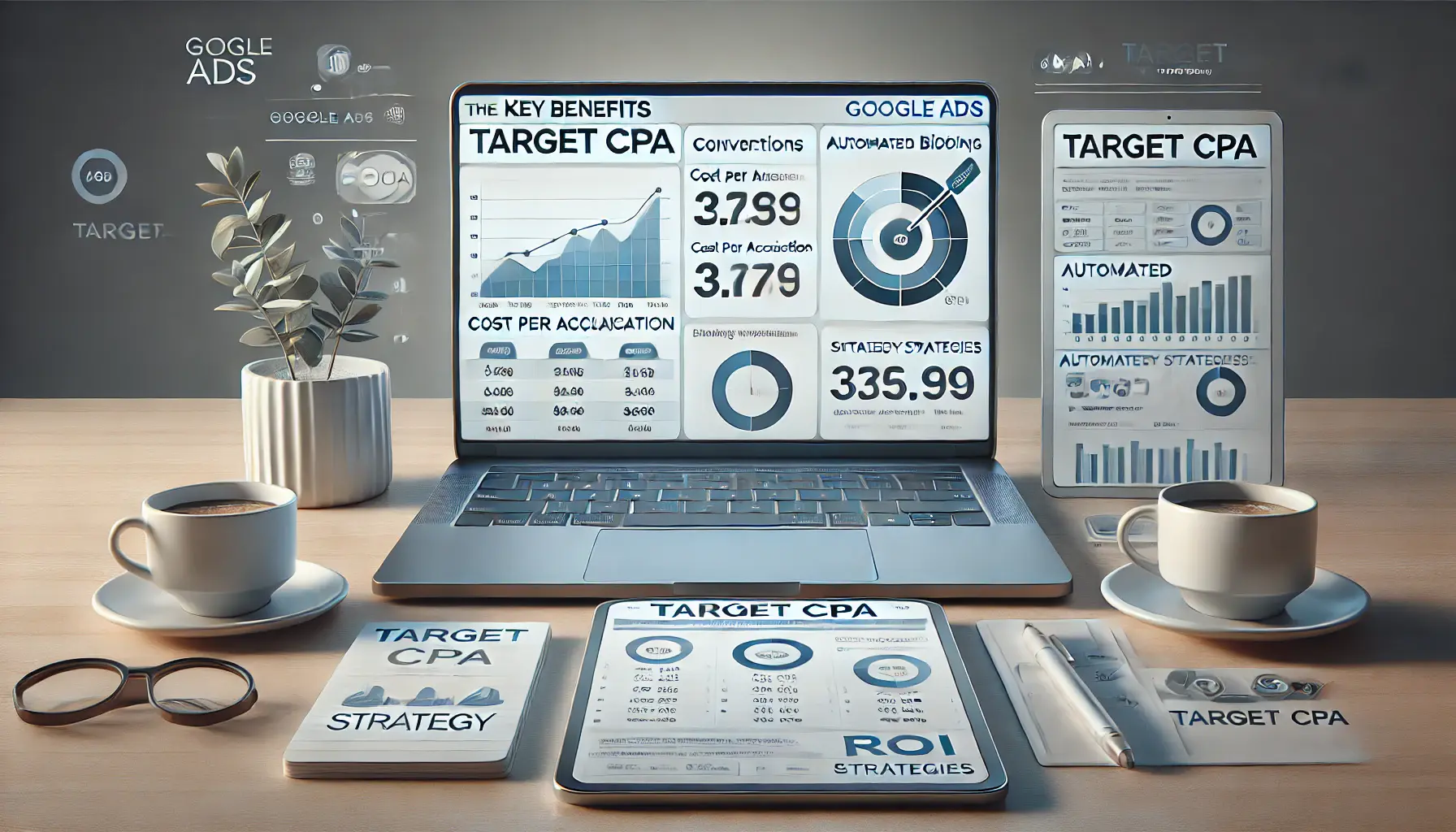
Illustrating the key benefits of using Target CPA in digital marketing campaigns.
Key Benefits of Target CPA
The Target CPA strategy offers advertisers a cost-efficient way to achieve conversions.
By automating bid adjustmentsChanges made to bids based on specific targeting criteria such as device, location, or time., it saves time and reduces the need for constant manual intervention.
Additionally, it provides a predictable cost structure, which is crucial for budget planning and campaign scalability.
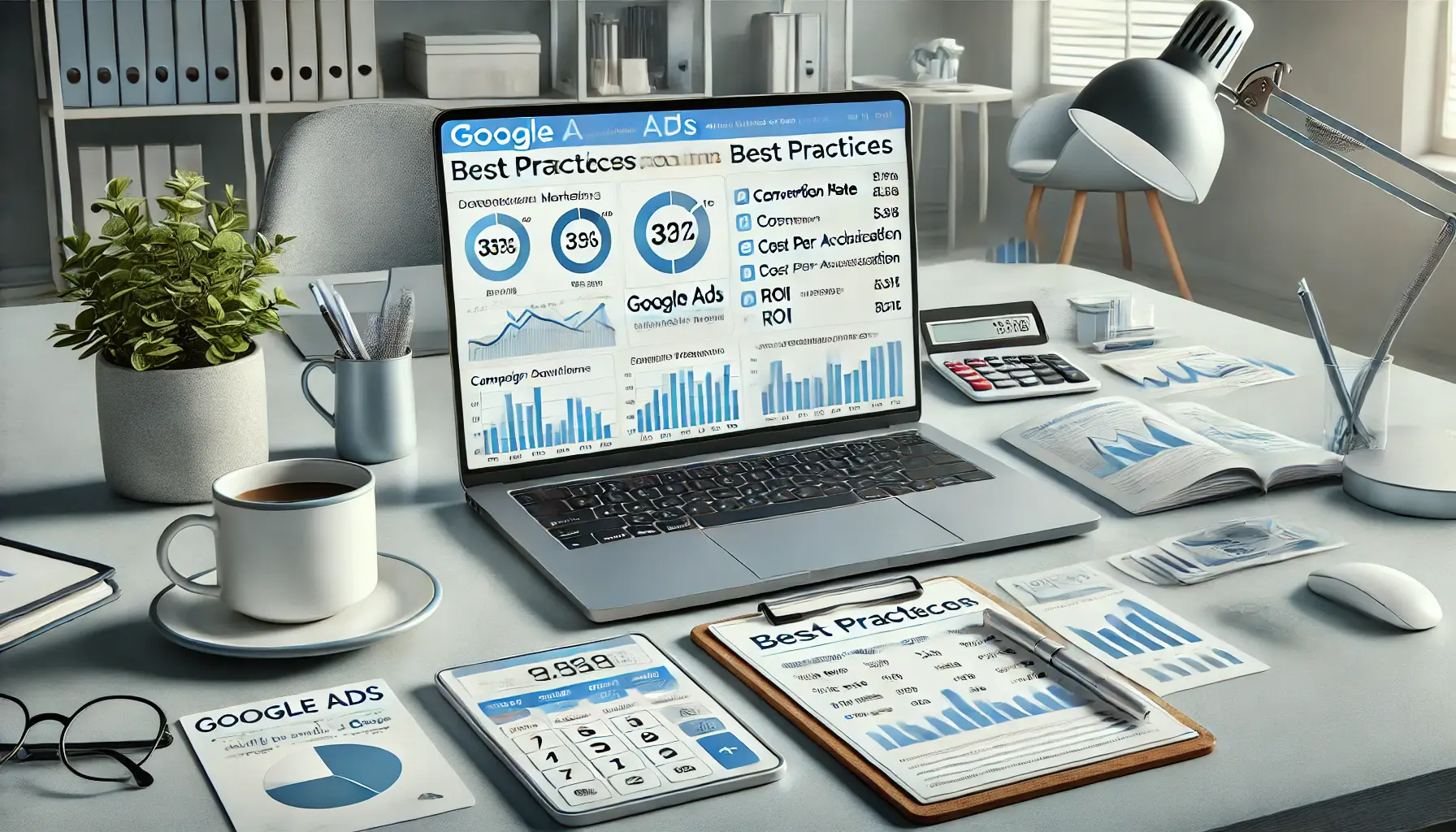
Illustrating the process of implementing best practices in Google Ads campaign management.
Implementing Best Practices
To ensure the success of your Target CPA campaigns, it’s important to adhere to best practices:
- Analyze historical conversion data to set realistic CPA goals.
- Give the algorithm enough time to learn and optimize bids effectively.
- Regularly check key performance indicators to track progress.
- Make gradual adjustments to maintain campaign stability and efficiency.

Illustrating the process of overcoming challenges in Google Ads campaigns.
Overcoming Challenges
While Target CPA offers significant advantages, it is not without challenges.
Advertisers need to ensure their campaigns have sufficient historical data for effective optimization.
Budget constraints and variability in conversion values can also pose hurdles, making regular monitoring and strategic adjustments essential.

Illustrating the process of measuring success in Google Ads campaigns.
Measuring Success
Success with Target CPA lies in correctly tracking key metrics such as conversion rate, actual CPA, ROASReturn on Ad Spend, a metric that measures the revenue generated from advertising spend., and conversion volume.
By leveraging Google Ads reporting tools and analyzing these metrics, advertisers can refine their strategies further to yield the best results.
In conclusion, Target CPA is a powerful tool for advertisers to maximize ROI and improve campaign efficiency.
By understanding its mechanics, following best practices, addressing challenges, and correctly measuring campaign performance, you’ll unlock its full potential and achieve your advertising goals with accuracy and efficiency.
Combine best practices, regular monitoring, and adjustments to unlock the full potential of Target CPA in achieving advertising success.

Illustrating the process of reviewing frequently asked questions related to Target CPA in Google Ads campaigns.
Your campaigns can be managed by an agency specialized in Google Ads, check out our service page.
FAQs about Target CPA in Google Ads
With the adoption of a Target CPA bidding strategy in Google Ads, several questions often arise.
Below are some of the most frequently asked questions and their respective concise answers to help you better understand this approach.
Target CPA (Cost-Per-Acquisition) is a bidding strategy where Google Ads automatically sets bids to help you get as many conversions as possible at your target cost per acquisition.
Google Ads uses your Target CPA to set bids based on the likelihood of the ad to convert, aiming to keep your cost per conversion equal to the target CPA you set.
Use historical data from your campaigns to set an achievable Target CPA that aligns with your business goals and past performance.
If your actual CPA consistently exceeds your target, re-optimize your campaigns or adjust the target CPA to improve performance.
Target CPA can be effective for various businesses, but it’s essential to have sufficient conversion data and align the strategy with your specific objectives.
Regularly monitor your campaign performance and adjust your Target CPA as needed to ensure it continues to meet your business goals.
Google recommends having at least 15 conversions in the past 30 days for Target CPA to perform effectively.
No, Target CPA focuses on the cost per acquisition and does not take into account the value of a conversion.
Target CPA is available for Search and Display Network campaigns but is not suitable for Shopping campaigns.










